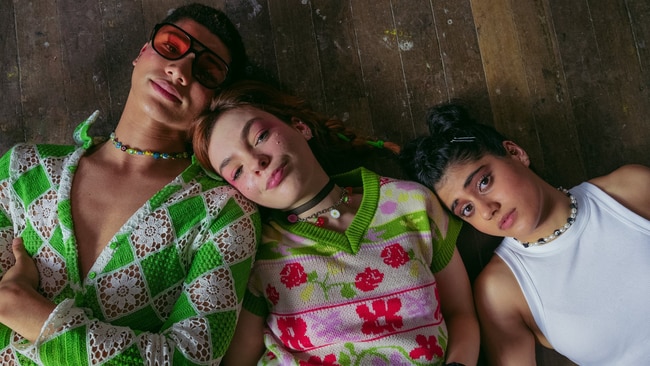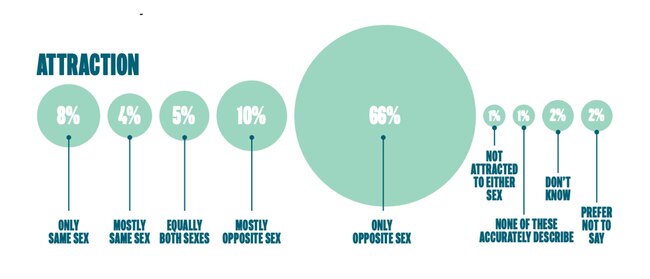Gen Z: 'A growing population of non-heterosexuals'
Only half of Gen Z say they are exclusively attracted to members of the opposite sex, as a landmark report lifts the lid on the generation's sexuality.

Only half of Gen Z say they are exclusively attracted to members of the opposite sex.
Nearly 30% of Gen Z identify as something other than straight, a new report from LGBTQ+ charity Stonewall details.
The ‘Rainbow Britain’ report has found that Gen Z is the UK’s queerest age group: with 71% of Gen Z identifying as straight, compared to 82% of millennials, 87% of Gen X and 91% of Baby Boomers.
The most common identity after straight is bisexual (5%), with 1% of the population identifying as pansexual.
In total, 7% of Gen Z identify as having a sexual orientation that involves being attracted to people of more than one gender. Comparatively, identifying as being gay (3%) or lesbian (1%) is much less common.
The data also indicates that 2% of the population identify as asexual or ace — asexual people experience little or no sexual attraction.
Just 53% of Gen Z said they are exclusively attracted to members of the opposite sex.

The report is an optimistic read on the state of queer people in the UK. “It is amazing to see that younger generations are no longer afraid to be themselves and have supportive families and social environments to thrive,” says Stonewall CEO Nancy Kelley.
The report found that Gen Z and millennials are the age groups most likely to be trans, and have close connections with trans people. 4% of Gen Z and millennials said they identify as trans, while 14% of Gen Z and 11% of millennials have family and friends who are trans. “The future is far more familiar and connected with trans people,” the report notes.
“This profound sea-change in our identity and orientation indicates that the idea of a ‘culture war’ often referenced in parts of the media is a misnomer being propagated by a narrow section of society, out of touch with – and unwilling to accept – the reality of our diverse, inter-connected communities,” says Kelley.
Australia remains in the dark about how these statistics mirror our non-heterosexual population. There’s a large degree of uncertainty and comparatively less information about the queer population within Australian society.
The Australian Bureau of Statistics does not publish population estimates that include a sexual identity breakdown. The 2021 census was widely criticised for failing to accurately collect data on sex, sexual identity, and gender diversity because precise demographic research can provide crucial insights that inform the health and economic services Australians need.
Fiona Shalley, a Research Associate in Demography and Growth Planning, tells The Oz that she has recently studied the bisexual population using a HILDA longitudinal data set.
The data set tracks a representative sample of Australians over time, asking a sexual identity question every four years since 2012.
“I found that we’ve got a growing population of non-heterosexuals,” says Shalley.
“The largest population within that is actually the bisexual population. However, the lesbian and gay population is also growing.”
Shalley did not study the attitudinal data round identity. But when asked whether she thinks that increased social acceptance and visibility of LGBTQ+ people is indicative of people feeling comfortable to come out, Shalley notes “I think you do see this growing confidence.”
“I think that a landscape that accepted same sex marriage, that was done so very openly in Australia by popular vote, there’s some feeling that this gave confidence to the queer population to come out more strongly. We certainly see that population being younger.


